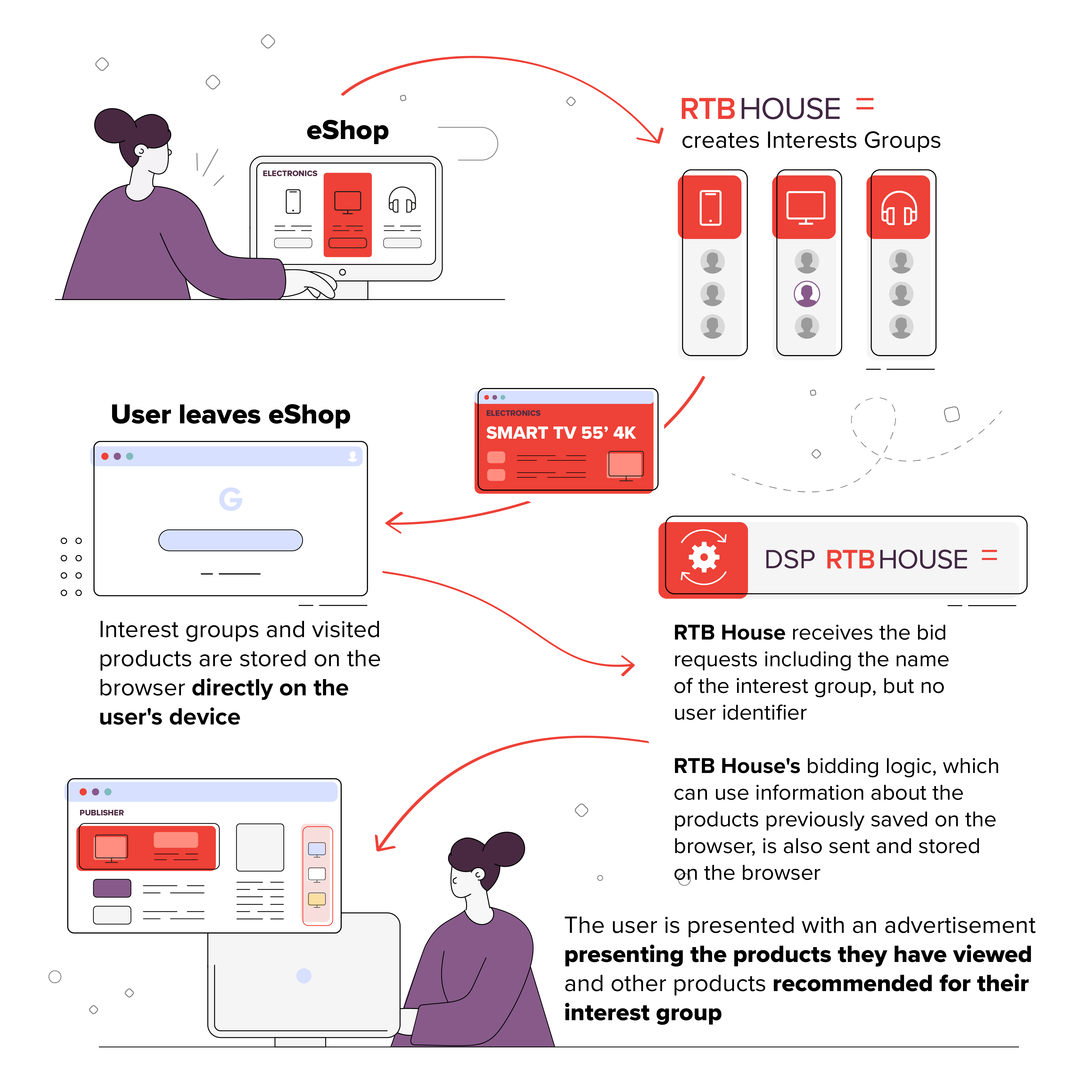Last Updated on: 2nd February 2024, 12:49 pm
Imagine a world without personalized ads. Brands would be forced to build generic messaging and throw it into the void, praying that it connected with someone. Customers would be less likely to find the products they actually want and forced to settle for whatever they happened upon online. Personalized ads help companies connect with people who actually want their products and save consumers from wasting their time on irrelevant content.
However, there’s a new challenge on the horizon. Consumers have become increasingly privacy conscious, and as an industry, we have had to find new ways to personalize our content to consumers while also respecting their privacy. This guide will walk you through personalized ads and how they will function as we move towards more privacy-friendly personalized ads.
In this article, you will learn:
- What personalized ads are, and why they matter.
- Why a cookieless future doesn’t mean the end of personalized advertising.
- How privacy-friendly personalized ads will work.
- How effective these new approaches will be.
Table of Contents:
- What are personalized ads, and why do they matter?
- The idea of a cookieless future
- How does Product-level TURTLEDOVE work within Protected Audience API?
- Is Product-level TURTLEDOVE effective?
What are personalized ads, and why do they matter?
Personalized ads are any kind of ad where the content is tailored to match the preference of an individual or, in some cases, a group of similar individuals. This type of ad personalization approach is undeniably effective, as 76% of users prefer ads that are tailored to their interest rather than generic alternatives. This preference has been the source of numerous personalized Google Ads and led to the rise of personalized advertising more generally.
How do personalized ads work?
There are many different types of personalized ads, and they all work slightly differently. However, in most cases, the broad principle is the same. An advertiser collects data about a user or a group of users to determine what products they’re interested in, what messaging is most appropriate, and what medium to deliver that message in. The user is then shown an ad that they are likely to want to engage in, and hopefully they convert into a customer down the line.
In this context, we should be focusing on third-party cookies. These are frequently used by advertisers and social media platforms to customize ads for an individual. To understand it, let’s take a look at a specific example. You may have a customer who has recently purchased a dive computer. It might be logical to use this information to display other diving-related items to them over a prolonged period, as you know that divers tend to build their gear incrementally rather than in one go. In theory, this should make everyone happy, but there’s a wrinkle: privacy.
What are the controversies around personalized ads?
Advertisers and social media platforms often use third-party cookies to tailor personalized ads to a user. However, in the process of doing this, they make it possible to collect a significant amount of detailed information, which might contribute to creating a highly intricate user profile, often without receiving informed or explicit user consent.
This has led to significant consumer pushback, with over 83% of UK users expressing apprehension about being tracked online for ad-targeting purposes. Despite well-meaning attempts to resolve this, many users remain unclear about what they’re agreeing to when accepting a website’s consent form.
Tech firms have taken note of these worries, and there has been a slow consensus forming toward limiting or outright removing support for third-party cookies. Today, many browsers like Brave or Firefox have implemented solutions that prevent third-party tracking from working, and with Google entering the tray, the cookieless future is fast approaching.
The idea of a cookieless future
Up until now, the HTTP cookie has provided this personalization, and the idea of a cookieless future is an alternative the industry cannot afford—advertising effectiveness would decrease by 52% (based on Google’s Team research conducted on the Google AdManager environment).
Developing a solution to a cookieless future that would allow personalized advertising content is paramount, which is why it was identified as one of the industry’s critical needs at the W3C working group, where the Privacy Sandbox initiative (discussed in our previous article) is being developed. The industry agreed that although the mechanisms behind personalization, such as targeted ads, will change, the end-user experience should remain as similar as possible.
This is why RTB House proposed the well-received Product-level TURTLEDOVE, which aims to address the issue of retargeting ads in what will be a cookieless future. Since our solution is welcomed by the industry and fully implemented in the Protected Audience API (one of the APIs within the Privacy Sandbox), we want to present how it will work.
How does Product-level TURTLEDOVE work within Protected Audience API?
One of the essential components primarily used for retargeting in the Protected Audience API (PAAPI) operates based on adding users to specific Interest Groups on the advertiser’s website. This is based on the rules created by the partner providing the advertising services. These groups will be saved and stored securely in the users’ browsers. Users who enter the publisher’s website will not be targeted as individuals but as group members.
The main issue of retargeting ads that had to be addressed in the proposal was tailoring the message—including the display of relevant products. The Product-level TURTLEDOVE proposal extends the scope of recorded information through the products a given user is interested in.
Our proposal allows for the ability to
- Present products that the users viewed on the advertiser’s website.
- Present products that are popular among members of the same Interest Group.

After saving information about the user’s products, our algorithm uses this data without identifying a specific user. This information is stored in the browser solely for the process of displaying the ad.
Since we directly connect to the advertiser’s website, we know which products were popular among all members of a given Interest Group. Thanks to this, we can preserve one of the most crucial aspects when it comes to retargeting ads: recommendations of products tailored to the users’ interests.
Product-level TURTLEDOVE within PAAPI fulfills what it was intended for: to maintain the status quo of personalization while keeping user data safe. Therefore, the ads themselves will look very similar to what we know today without users noticing any significant changes.
See also: Deep Learning Leads to Ultra-precise Personalization
Is Product-level TURTLEDOVE effective?
Early preliminary tests at RTB House have shown that Product-level TURTLEDOVE allows the recommendation effectiveness to maintain 94.5% of today’s efficacy. As we move forward, we are sure that this number will be even higher by the day of launch.
If you have any questions or comments regarding the article, or want to learn how you can implement privacy-friendly personalization, please let us know.





